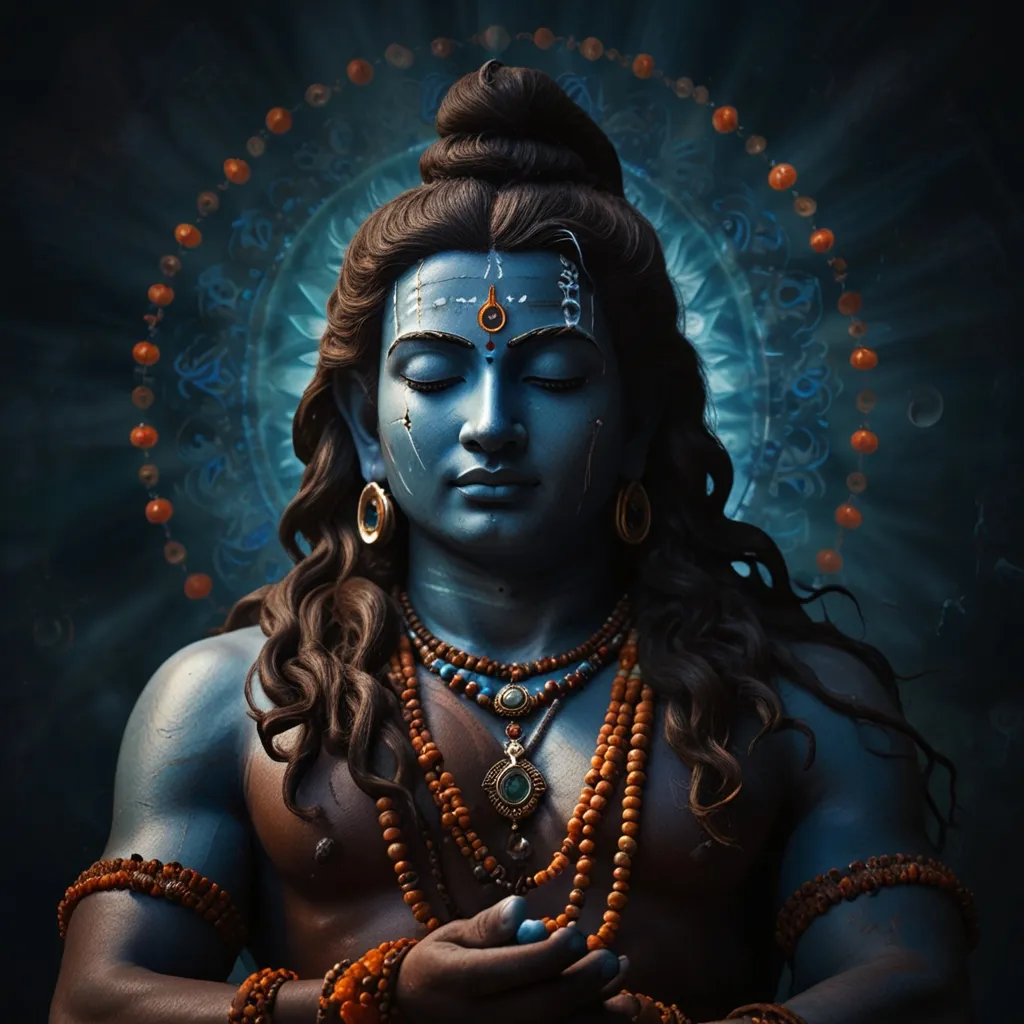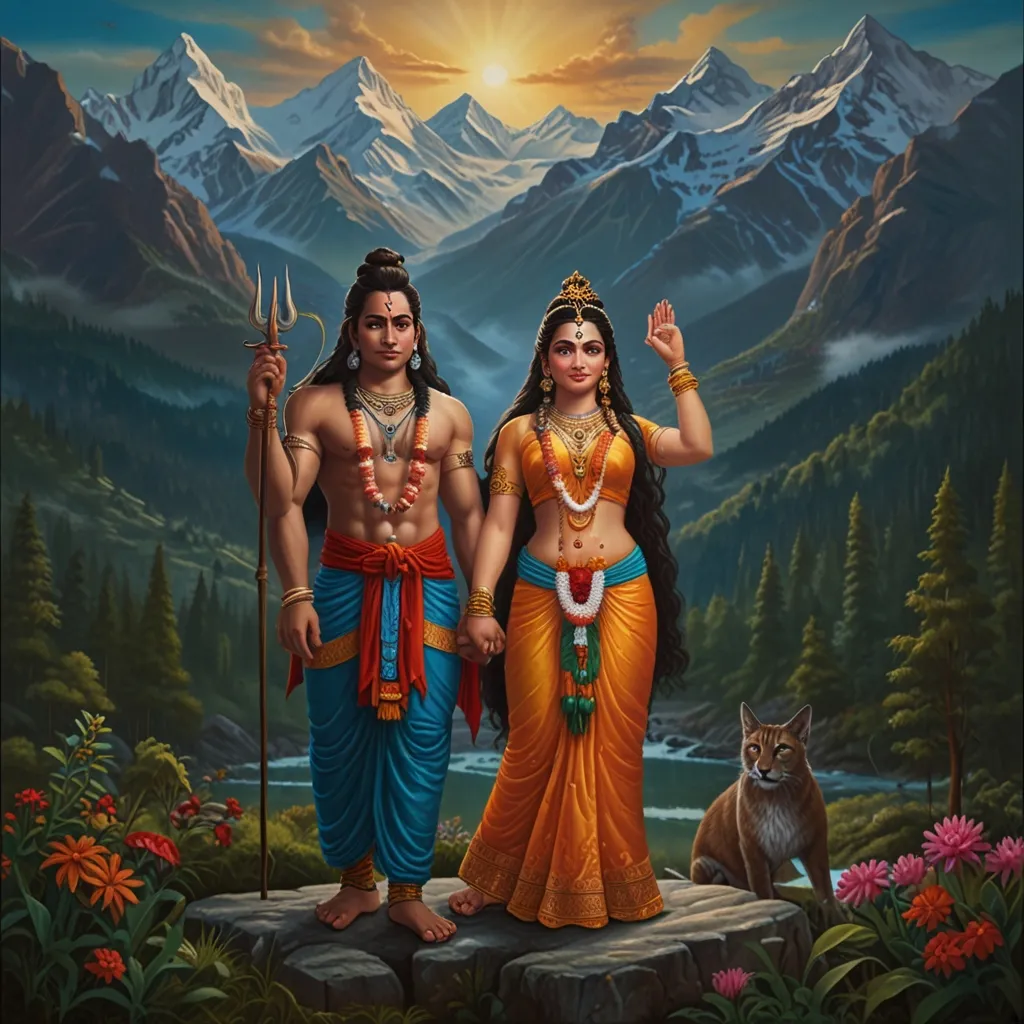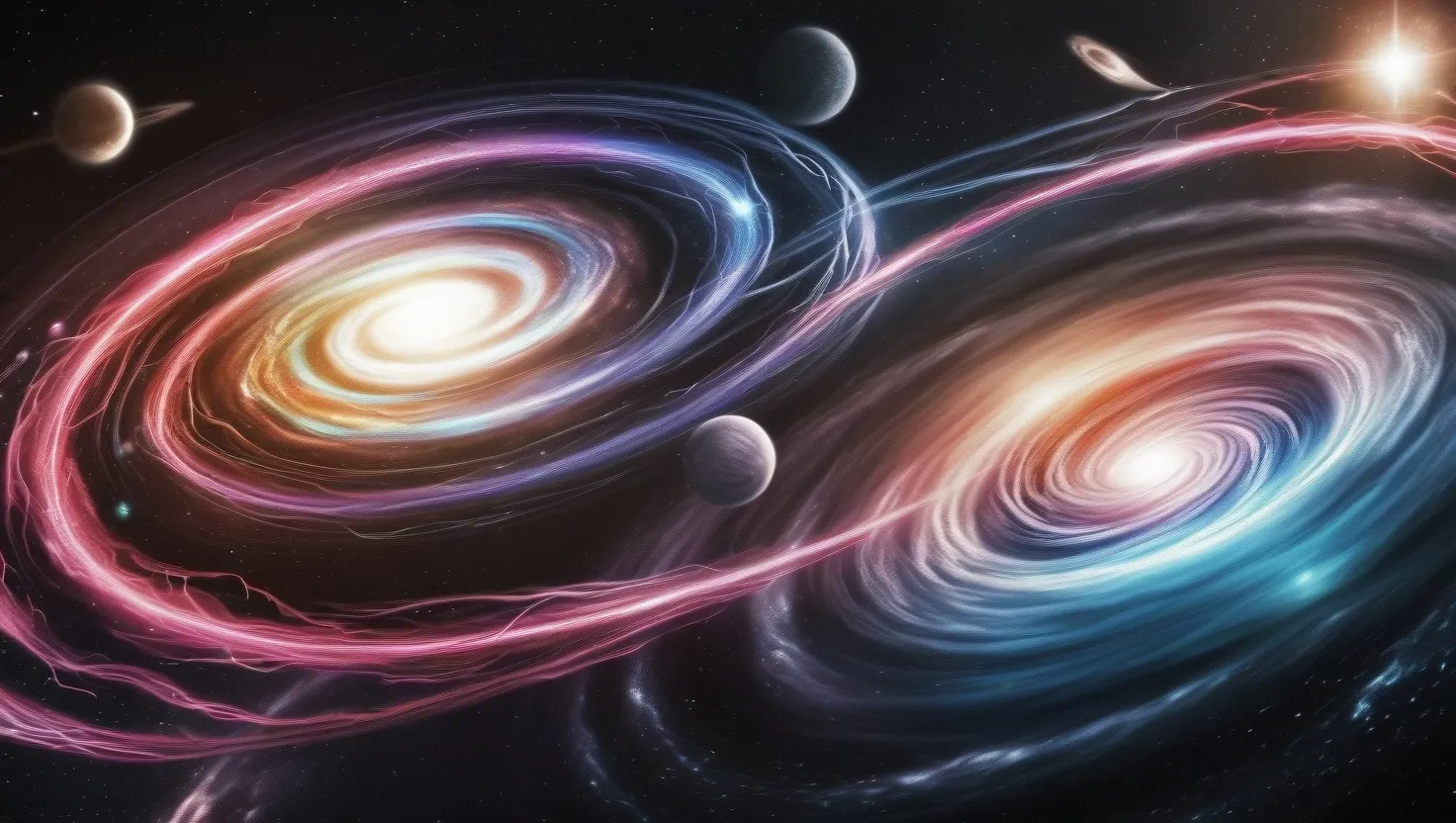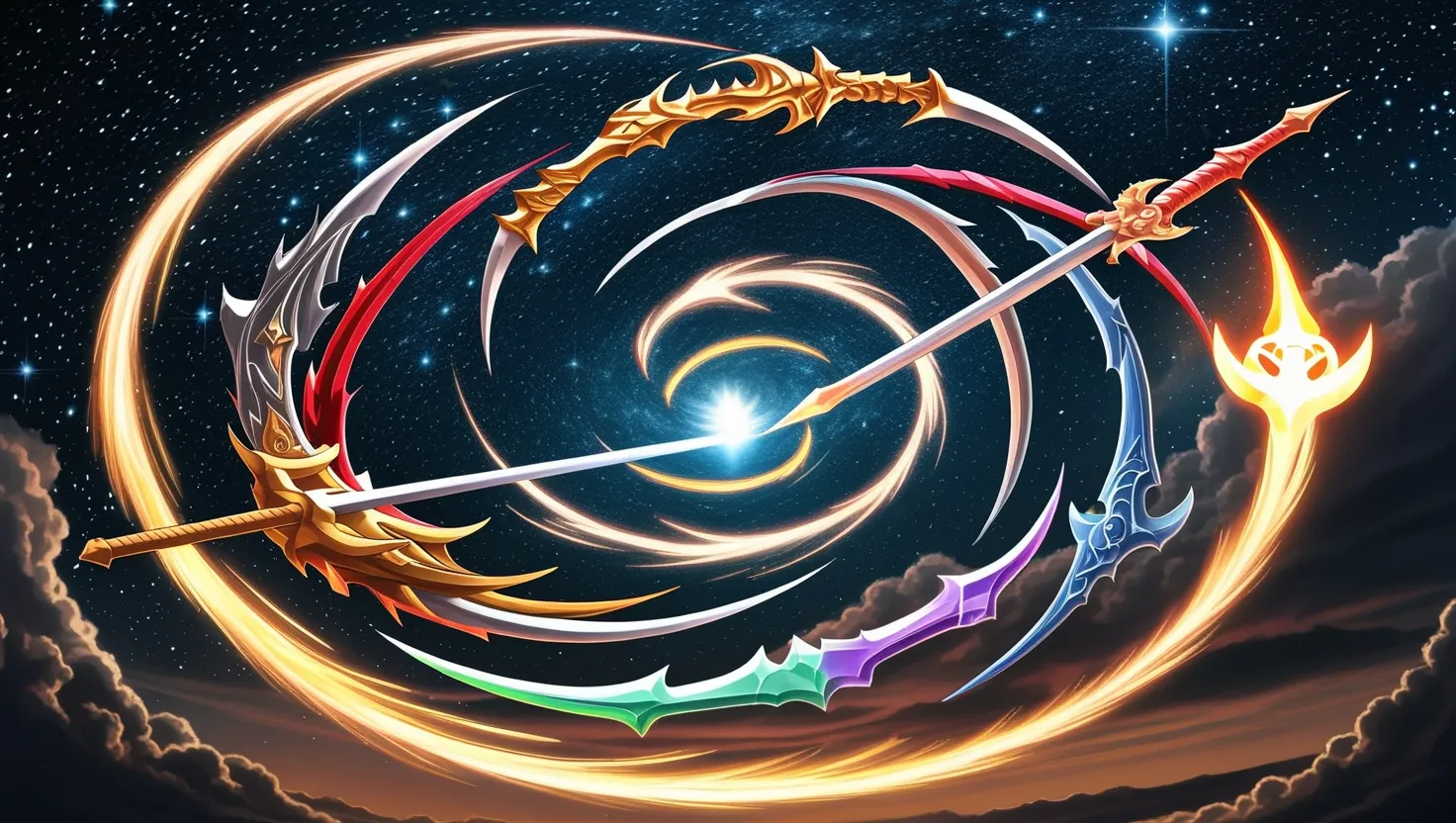In the vast landscape of Hindu mythology, there’s a magical story about a bead known as the rudraksha, deeply tied to the essence and life of Lord Shiva. To understand this mystical bead, we first need to dive into the character of Shiva himself.
Shiva, one of the big three gods in Hinduism, comes in various forms, each carrying its own unique vibe. The most well-known image is that of a laid-back ascetic, with a third eye on his forehead, a crescent moon nestled in his hair, and a river flowing from his locks. That third eye of his? It’s a symbol of his wrath, capable of bringing down some serious destruction. He’s often rocking a garland of snakes around his neck and his throat is a deep shade of blue, earning him the name “Neelkanth.” Shiva’s also always seen with his trusty trident, the trishula, and a drum called the damaru.
Shiva is part of the Trimurti, the trio of gods that also includes Brahma and Vishnu. Brahma is the creator, Vishnu is the preserver, and Shiva is the destroyer, playing a key part in the cycle of death and rebirth. This trio is super crucial in Hinduism because it breaks down life’s essentials: birth, growth, and death.
Now, let’s jump into the origin story of the rudraksha. It starts with a pretty nasty demon named Tripurasura, who made life miserable for everyone. Both humans and gods were scared out of their wits. In desperation, the gods turned to Shiva for help. Touched by their pleas, Shiva went into deep meditation. After what seemed like forever, he finally opened his eyes, and beads of tears fell to the earth. These divine tears gave birth to the first rudraksha trees.
The word “rudraksha” is itself a nod to this origin. “Rudra” means Shiva and “aksha” means eyes or tears. So, rudraksha basically translates to “the tears of Shiva.” But these beads aren’t just pretty trinkets; they embody Shiva’s divine essence. In many portrayals, Shiva is shown adorned with rudraksha beads, highlighting their special connection.
The rudraksha tree, scientifically dubbed Elaeocarpus ganitrus Roxb, is a grand evergreen found in tropical and subtropical areas. It pops up pretty quickly and produces blue fruits, often likened to blueberries. The seeds inside these fruits are the rudraksha beads, which are celebrated for their spiritual and healing qualities.
These beads are believed to bring a host of benefits to those who wear them. They’re said to promote peace, good health, and a sense of self-empowerment. They’re also considered a protective amulet, fending off negative energies and malefic vibes. Rudraksha beads are classified based on the number of their faces, ranging from one to twenty-one, each type believed to offer different spiritual and healing benefits.
In Hindu mythos, the rudraksha isn’t just any bead; it’s a symbol of a deep connection between the mortal world and the divine. It’s a bridge linking humans to God, with its roots firmly anchored in Hindu spiritual practices. Yogis, saints, and spiritual seekers have rocked rudraksha beads for centuries, using them in their meditation and prayers to find enlightenment and inner peace.
The story of the rudraksha is more than just an engaging tale; it’s a powerful testament to Shiva’s compassion and his role in the cosmic drama. It reassures believers that even during dark times, there’s always a chance for redemption and tranquility. Shiva’s tears turned to rudraksha beads continue to inspire and guide spiritual seekers on their path to understanding and connection with the divine.
So, the rudraksha isn’t just a bead; it’s a symbol of Shiva’s love and compassion. Its origin story showcases the timeless power of mythology and its deep spiritual significance in Hinduism. Whether worn around the neck or used during meditation, the rudraksha serves as a potent tool for those on a quest for spiritual enlightenment and a closer bond with the divine.






